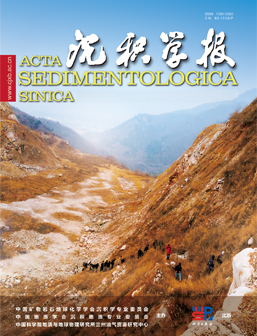Geochemical characteristics of formation water and gas-water distribution in karst reservoir-- Section Ma 5 of Majiagou Formation, southern area of Sulige Gas Field
doi: 10.14027/j.issn.1000-0550.2024.114
- Received Date: 2024-08-14
- Available Online: 2024-12-03
-
Key words:
- Key words: Formation water /
- Gas-water distribution law /
- karst reservoir /
- Majiagou formation /
- Sulige Gasfield /
- Ordos Basin
Abstract: The Ordovician Majiagou Formation in the southern Sulige gas field is mainly a karst reservoir with proved reserves of over 100 billion square meters of gas. In the process of development and production, the formation water is serious, the gas-water relationship is complicated, the gas-water distribution law and the main control factors are unclear, which restricts the natural gas production capacity release in this area to a large extent. Based on the analysis of formation water chemical characteristics, the formation environment of formation water is analyzed by using chemical parameters such as sodium chloride coefficient, desulfurization coefficient, sodium calcium coefficient, magnesium calcium coefficient and metamorphism coefficient, and then the gas-water distribution law is studied through the identification of single well water level, the correlation of well profile and the characterization of plane distribution characteristics. Finally, the main controlling factors of gas and water distribution are discussed in terms of source rock, reservoir heterogeneity and structure. The results show that the formation water in the southern part of the Sulige gas field has a relatively concentrated salinity distribution with an mean of 83598.7mg/L, a light acidic pH, and a CaCl2 water type. The formation water as a whole is characterized by low sodium chloride coefficient, low desulphurization coefficient, low magnesium calcium coefficient, low sodium calcium coefficient and high metamorphism coefficient, indicating that the formation is well sealed. It is beneficial to gas reservoir preservation, and the plane characteristics of each parameter are similar and controlled by karst reservoir. According to the genetic difference, spatial distribution and reservoir characteristics, the formation water is divided into water in the lower part of type I structure, isolated lensing water in type II structure and water retention in type III low permeability zone. The water in the lower part of type I structure mainly develops in the karst area and is controlled by the karst residual hill unit, and the water in type II lensing water is scattered in the plane, and the water in type III low permeability is difficult to identify due to the plane distribution of karst depressions and trenches. The distribution of formation water is controlled by three factors: source rock, karst reservoir heterogeneity and local structure of the same karst unit. The lack of hydrocarbon supply capacity of source rock is fundamental to the development of formation water bodies. The distribution pattern of gas and water is determined by the heterogeneity of karst reservoir, and the differentiation of gas and water is caused by local structure. The same karst unit has a unified gas-water contact.
| Citation: | Geochemical characteristics of formation water and gas-water distribution in karst reservoir-- Section Ma 5 of Majiagou Formation, southern area of Sulige Gas Field[J]. Acta Sedimentologica Sinica. doi: 10.14027/j.issn.1000-0550.2024.114 |






 DownLoad:
DownLoad: